Before we left Canada, Gregor announced that he wanted to take Spanish lessons in Guatemala and live with a Spanish-speaking host family. So we signed up for a two-week Spanish school and homestay program in San Pedro La Laguna, Lake Atitlan.
- 3 hours of Spanish lessons every morning
- 45 minutes of Spanish Conversation Club every afternoon
- 1-2 hours of Spanish homework every day
- 3 meals a day with our Spanish-speaking Guatemalan hosts
If you ask Gregor what he thought about his Spanish Immersion experience, he would tell you that it was the toughest two weeks of the Pan-American journey so far.
This is coming from a man who has climbed many mountains (literally and figuratively) that have tested his mental, emotional, and physical stamina.
The challenges started even before our first class…
______________________________
Driving to San Pedro
San Pedro La Laguna (‘San Pedro’ for short) is located along the shore of Lago de Atitlan, a beautiful lake formed by the collapse of a massive volcanic complex that erupted 85,000 years ago.
To get to San Pedro, we first had to descend a whopping 700 m down a ridiculously steep, switchbacking, potholed road leading to the lake.
As Lucky hurtled downhill, Gregor dodged humans, chicken buses, and cargo trucks that seemed to occupy every turn. It was a brake-burning, teeth-clenching, sphincter-tightening descent.
Once we entered San Pedro, our sphincters tightened even more as we maneuvered around tuk-tuks and motorbikes through the town’s insanely steep and narrow streets.
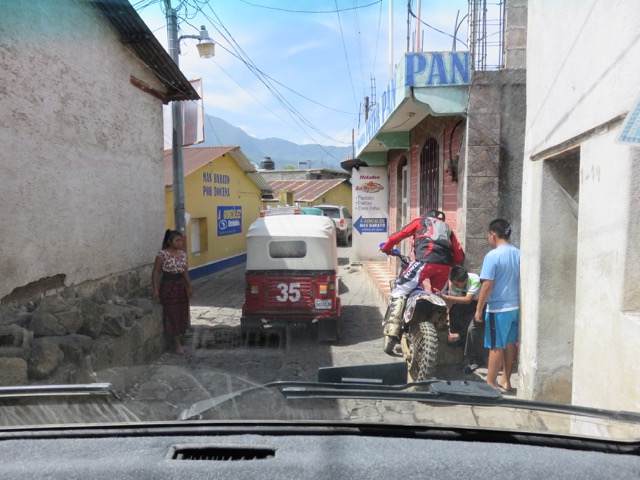
Our mission was to find San Pedro Spanish School so that we could register for our classes and find our homestay family. Unfortunately, our navigation software (maps.me) kept leading us through ever-narrowing pathways with oncoming traffic and sharp turns that were impossible for Lucky to fit through. It seemed like Gregor had to drive backwards more often than forwards just to get around.
By the time we found the school, Gregor was so stressed out that he almost withdrew our registration and headed for the hills. Luckily, we found a bar with some ice cold beer to help calm his nerves.
During our two-week stay in San Pedro, we shared many 1L bottles of Cabro beer at our favourite resto-bar called ‘The Buddha’. The third floor had a great view of San Pedro Volcano.
________________________________________________________________________
San Pedro Spanish School
When we first arrived in San Pedro, Gregor and I only spoke “Survival Spanish”. We knew basic words and partial phrases that allowed us to get food, money, fuel, directions, and accommodations while traveling. Our goal was to be able to string sentences together so that we could have a decent conversation with the Latin American locals.
We were pleased to find that San Pedro Spanish School had a lovely learning atmosphere. The school had charming lakeside classrooms and cabanas designed for one-on-one lessons.
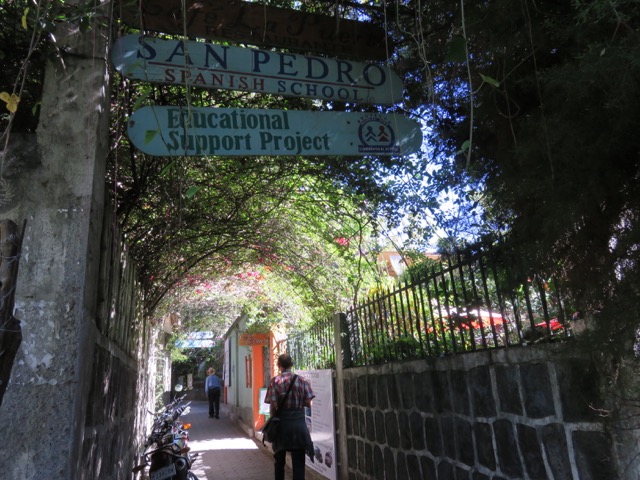
The school also had an open air cafe on site that doubled as a nice study area. As we reviewed our verb conjugations, we could order tasty fruit smoothies and nibble on Central American snacks, including nachos, quesadillas, and french fries.
The cost of our Spanish class was $90 USD per person per week. This included:
- 3 hours of one-on-one lessons every weekday (Gregor and I had different teachers)
- ability to practice Spanish in a 45-minute Conversation Club (we joined different groups according to our skill level)
- free after-school activities (salsa classes, Guatemalan films, slideshow presentations)
- access to guided excursions (hikes, eco-tours, day trips to other cities)
Guatemala is known to have some of the most affordable and effective one-on-one Spanish lessons in Central America. It also has very affordable homestay programs for students.
_____________________________________________
Our Guatemalan Homestay
San Pedro Spanish School offers homestay accommodations for $100 USD per person per week. This includes:
- a room with private bath and hot shower
- 3 meals a day (except Sundays)
- wifi access
- drinking water
- 8 lbs of laundry per person per week
So $100 for the homestay plus $90 for one-on-one Spanish lessons adds up $190 per person per week to live and learn Spanish in San Pedro. At this rate, it would cost only $1520 USD per month for both Gregor and I to go to school, live in a house, and have prepared meals for 6 days a week. We couldn’t possibly live this way for the same cost in Canada!
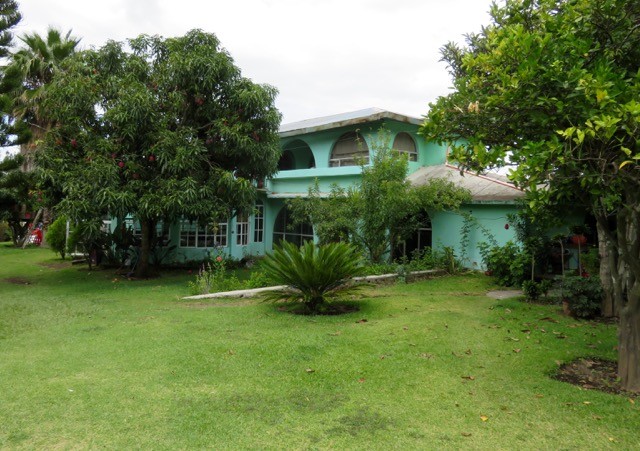
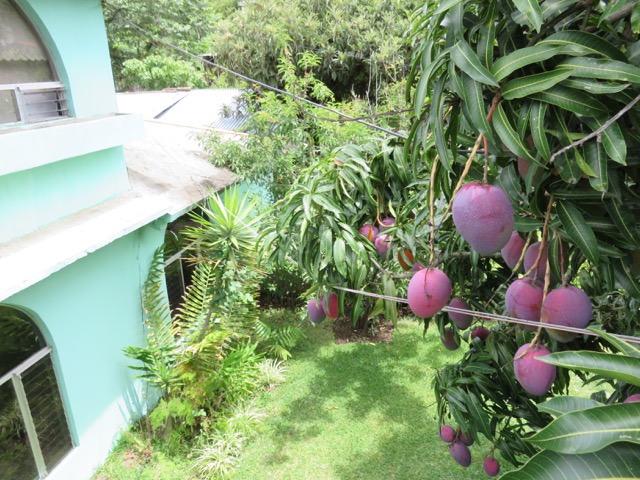

The school placed us with the best hosts ever. Tula and Francisco Mendez Puac are both over 70 years old but they have more energy than most athletes I know. Tula is a retired nurse and schoolteacher who loves to cook. She wakes up at the crack of dawn every morning to tend to her garden where she grows fruits, vegetables, flowers, and tropical trees. Her husband, Francisco, also works with Tula in the garden, but spends most of his day cooking at the family restaurant.
These hard-working, salt-of-the-Earth people believe in nourishing the body and soul with good faith and good food. As a result, Gregor and I were treated to amazing meals and genuine Guatemalan hospitality every day. While other students were fed boring beans and rice every day, we were fed delicious food that allowed us to concentrate on our studies instead of our bellies.
Tula and Francisco have three grown sons (Francisco, Mauricio, and Luis), each with families of their own. Unfortunately, we couldn’t get a photo of the whole family together because everyone worked at different times of the day. However, we did have some American “brothers and sisters” at our homestay who were also learning Spanish at San Pedro School:
All of us agreed that we were very lucky to be living at Casa Mendez. As we ate together, our hosts patiently listened to us as we butchered their language and made sure to correct our poor Spanish without judgement.
Tula was particularly good at turning painfully awkward Spanish conversations into lighthearted banter. One day, Gregor mustered up the courage to start a Spanish conversation about the weather (how Canadian!).
Since it was a very windy day, Gregor looked up the Spanish word for “windy” and proceeded to speak:
“Muy ventoso hoy!” he said, thinking he was saying: “Very windy today!”.
Tula’s eyes widened in horror. Sensing that she misunderstood, he said it again a little louder:
“Muy ventoso hoy!” he repeated, gesturing to the swaying trees in her garden and making a whistling sound like the wind.
Tula paused for a moment and then burst out laughing. When she regained composure, she taught us the real meaning of “ventoso” by fanning her backside as if she had let out a fart.
So Gregor was actually saying: “Very gassy today!”.
She was so horrified earlier because she thought that her cooking was giving him bad gas.
By the way:
The correct translation for “It’s very windy today” is “Hay mucho viento hoy”.
__________________________________________
You’d think that having an awesome homestay and a lovely school atmosphere would provide the perfect setting for learning a new language. Well, we were definitely in the right place to learn Spanish. We just came at the wrong time…
__________________________________________
San Pedro Fair
Our two-week language course coincided with San Pedro’s two-week fiesta commemorating the town’s birthday and its patron saint. As part of the celebrations, the roads around the Santiago Dock were blocked off for a street fair.
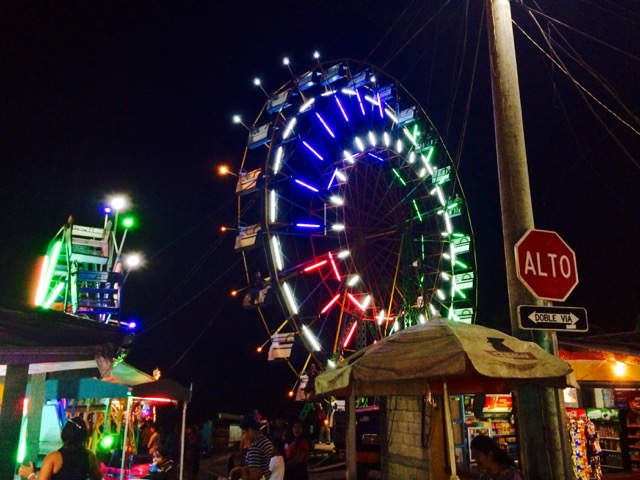
The fair was like a miniature version of a carnival that you’d find in Canada, complete with ferris wheels, kiddie rides, games-of-chance, loud music, and greasy food stalls.
But the San Pedro fair had something that you wouldn’t find in a Canadian fair…
Bombas!
Bombas are ballistic noise makers. Like fireworks, they are launched in the air for special celebrations. But unlike fireworks, they don’t make pretty sparkles in the sky. They just make a loud BOOM noise – like a canon shot.
Now imagine this canon shot being fired in an area surrounded by volcanoes. The shot ends up sounding extremely loud because it resonates on the steep slopes above the town.
Now imagine this canon shot being fired every few minutes. It feels like you’ve just entered a war zone. And the only way to escape is to climb the aforementioned slopes above town.
Now imagine these canon shots being fired at 4 am the night before you start your first Spanish class. And then again the next day during Spanish class. And again and again throughout your Spanish classes each and every day.
After two weeks, we were shell-shocked. Some days, we could barely remember what we had for breakfast in English, let alone in Spanish.
_________________________________________
Gregor’s Learning Experience
In his first week of classes, Gregor wasn’t getting a lot of quality sleep so he had a really hard time recalling new vocabulary. It took him so long to pull the Spanish words out of his brain that he spoke like Tarzan with dementia:
Teacher: Where are you from?
Gregor: I… am… uh… from… Canada.
After two weeks, Gregor’s vocabulary and comprehension progressed quite a lot. He still speaks slowly, but now he sounds more like William Shatner:
Teacher: What is your nationality?
Gregor: I… am… Canadian.
I really feel that Gregor made great progress over the two weeks. That said, I have never seen my husband so frustrated in our 17 years of marriage.
Gregor found it extremely challenging to absorb foreign words and unfamiliar sentence structures for hours at a time. His brain was so exhausted from the morning classes that he napped every day after lunch. His ego was so shattered after each Conversation Club that he barely had the confidence to speak Spanish to our host family at dinner. And he was so spent after dinner that he was in bed by 9:00 pm every day.
I’m so proud of Gregor for sticking it out. Now he can understand Spanish so much more – and that’s half the battle in any language.
_______________________________________
Janice’s Learning Experience
My experience was much different from Gregor’s because I had way more background with languages compared to Gregor. Firstly, I took university level French, which shares many similarities to Spanish. Secondly, my parents’ dialect (Tagalog) contains many Spanish words because the Philippines was colonized by Spain for over 200 years. This meant that my vocabulary was ok, but speaking in full sentences was still a challenge.
In my first week of classes, I could only speak very simple Spanish in present tense:
Teacher: Where did you go yesterday?
Janice: I go to store.
Basically, I spoke Spanish like a toddler.
Eventually I learned how to respond to my teacher properly in past tense. But I wasn’t always sure of myself so I would often ’upturn’ my sentences, as if I was responding with a question:
Teacher: Where did you go yesterday?
Janice: I went?…to the store?
I sounded like a pre-teen at the mall.
By the end of the second week, I was placed in a moderated discussion group where we had to share our opinions about random topics such as feminism, unemployment, and religion – all in Spanish.
Teacher: What do you think about unemployment?
Janice: I think that unemployment is caused by several factors…
Now I can speak Spanish like a teenager reciting a Social Studies essay. Better than talking like a toddler!
______________________________________
Before and After School
Every day, Gregor and I had to walk through the San Pedro fairgrounds to get to and from school.
On each walk, we were reminded that the San Pedro fair didn’t have garbage cans or public toilets. The gross smell of alcohol-saturated urine wafted from street corners and narrow alleys. We held our breath as we walked passed the dreaded “pee spots”, stepping carefully to avoid fly-infested piles of garbage and dog poop.
Gregor happens to be very good at spotting dog poop on the street, so he tends to walk ahead to protect our shoes against the brown stuff.
As we walked through San Pedro, Gregor and I marvelled at the colourful traditional fabrics worn by the locals.
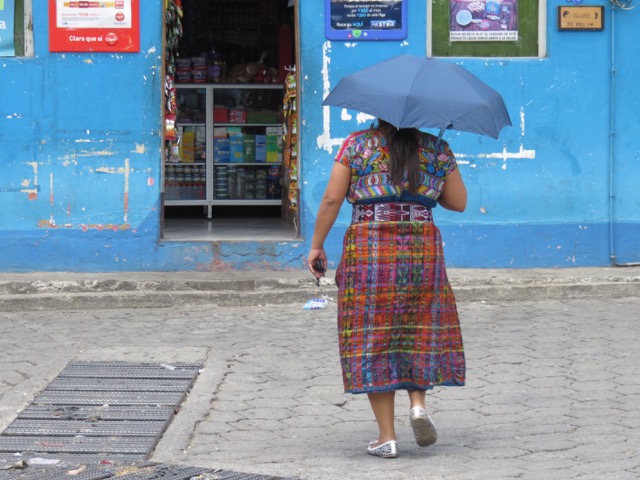
Since we had the weekend to ourselves, we had time to explore a few places outside of San Pedro.
Both of us took a tuk-tuk to the neighbouring town of San Juan for a Friday wine and cheese dinner to celebrate Gregor’s birthday.
We met up with overlanding friends John and Paula (OurBiggerPicture.com) and shared stunning cheese and charcuterie platters at Cafe Artesano.
That same weekend, Gregor and I left Lucky behind and took a shuttle bus to Chichicastenango’s Sunday Market. We were joined by our homestay sisters, Beth and Julie.

On the ride back to San Pedro, we all got tossed around in the shuttle as our driver sped on the switchbacks, hammered potholes, and dickered with his phone. It was amazing we didn’t all barf in the shuttle – or die while barfing.
__________________________________________
It’s been only 5 days since we finished our Spanish Immersion in San Pedro, but we’re already starting to forget how hard it was in the beginning. In fact, Gregor and I are talking about taking a refresher course in a few months, maybe in Nicaragua.
Perhaps we’re experiencing that same type of amnesia that first-time mothers get after childbirth – they forget about the trauma they experienced with the first baby and next thing you know they want another. Or maybe we’re just getting braver about pushing ourselves out of that comfort zone.
Despite the bad roads and the bombas and the frustration of learning a new language, we realize that our time in San Pedro was really special.
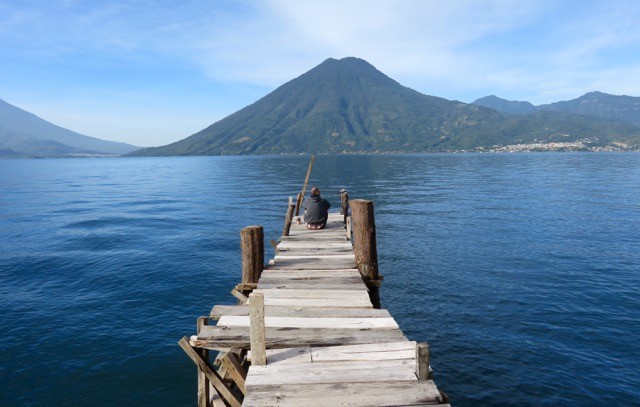

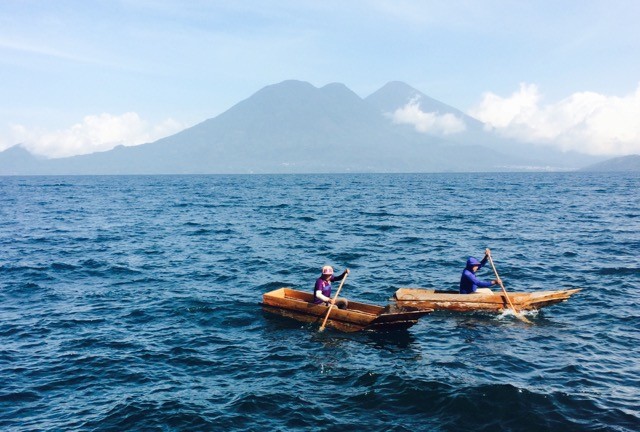
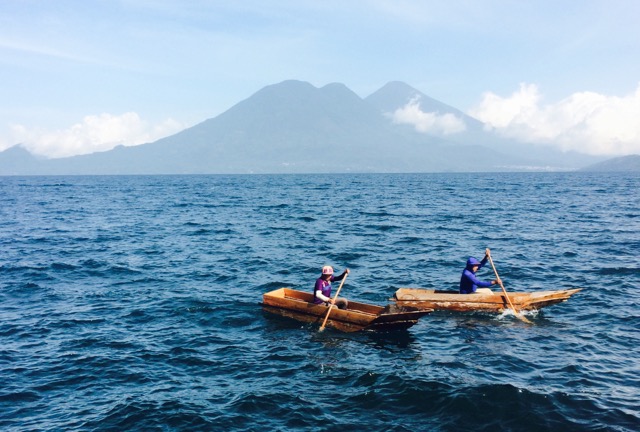
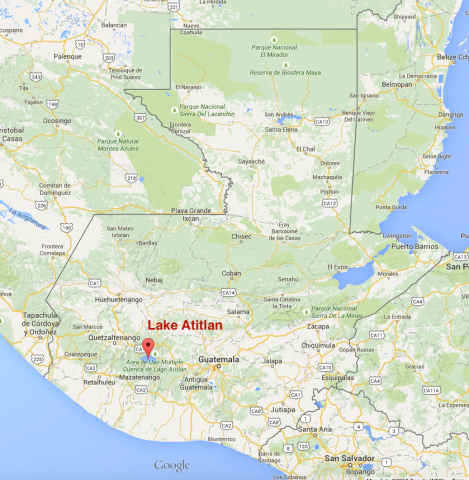
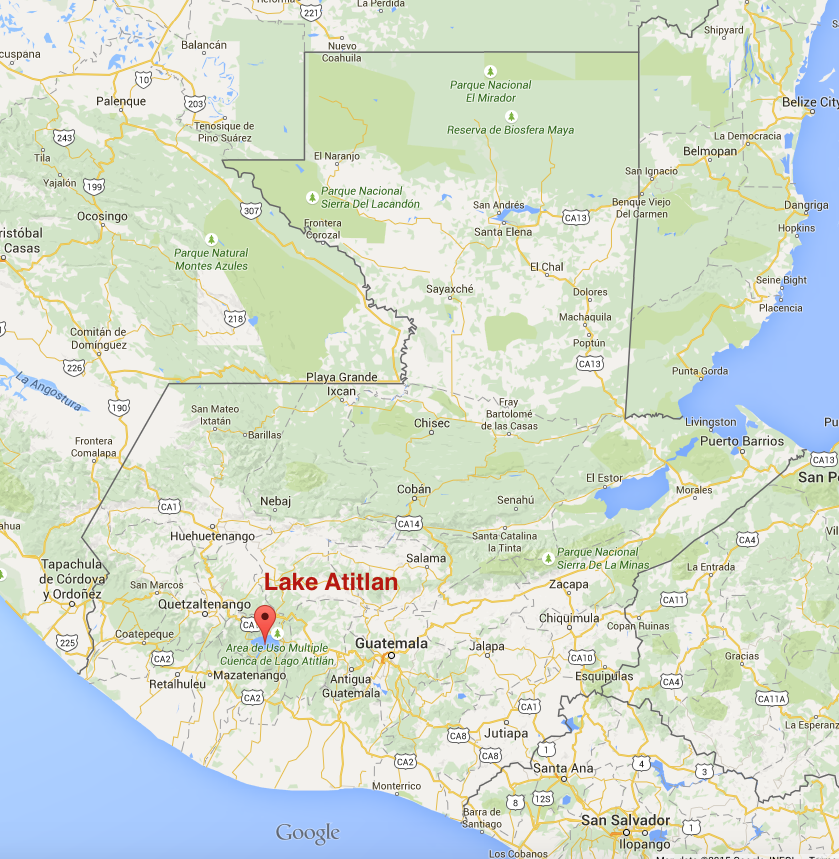
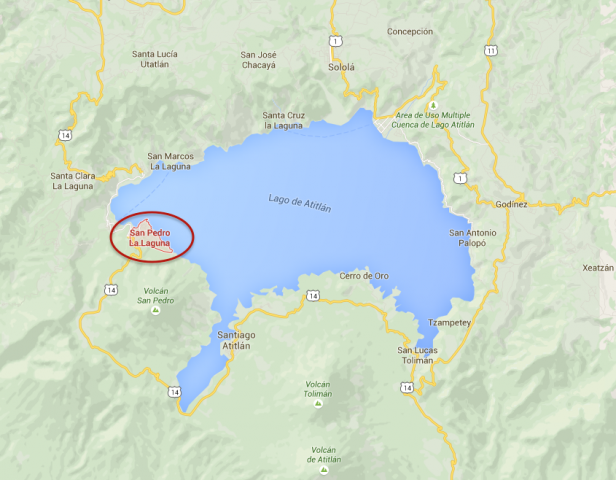
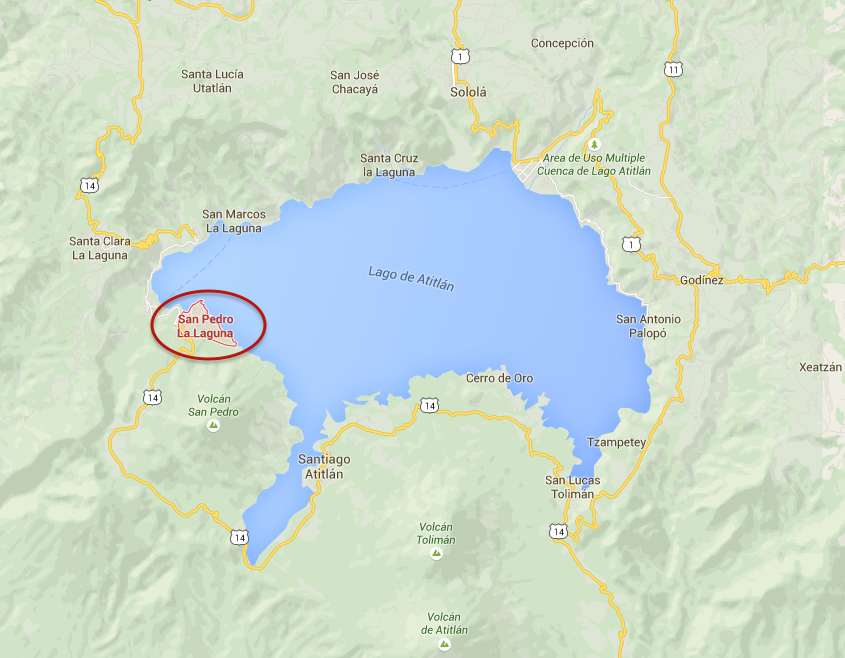
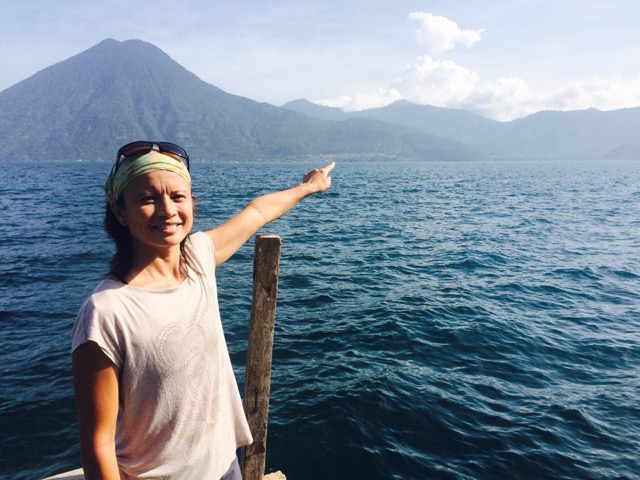

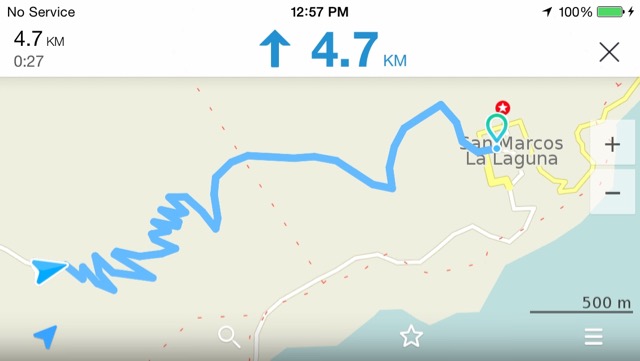
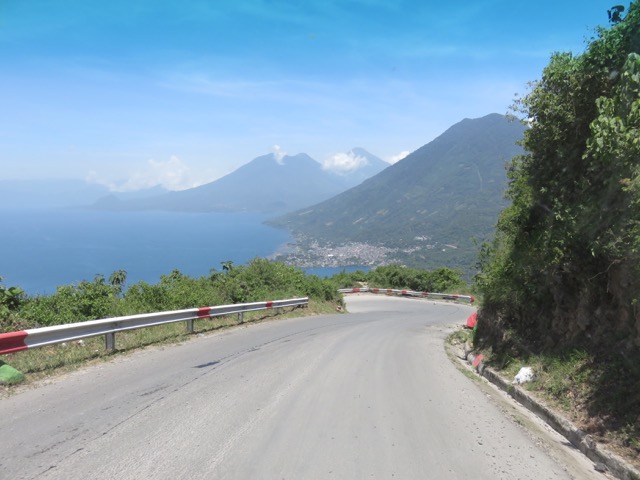
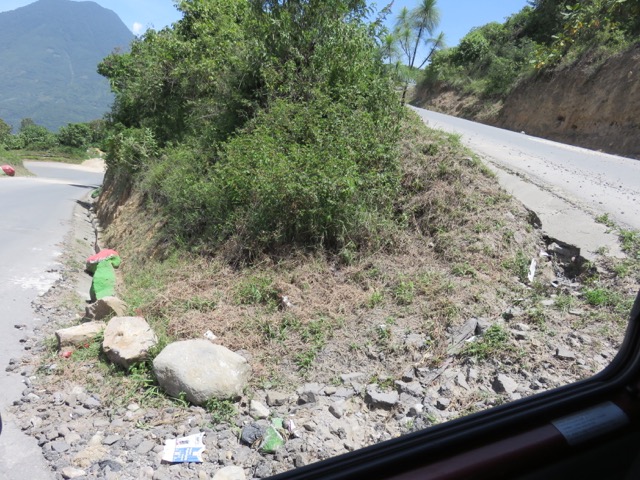
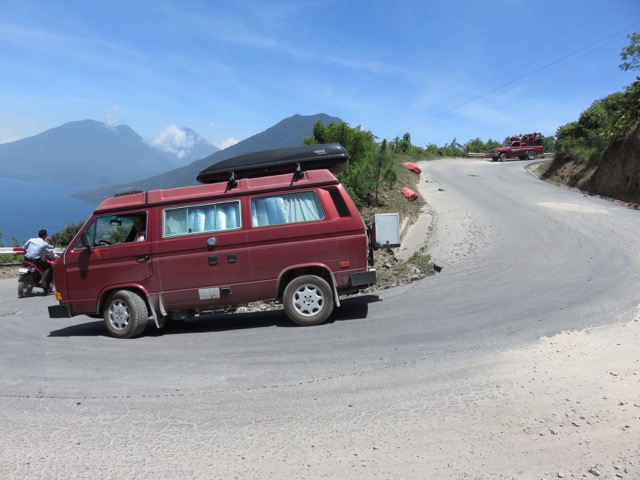
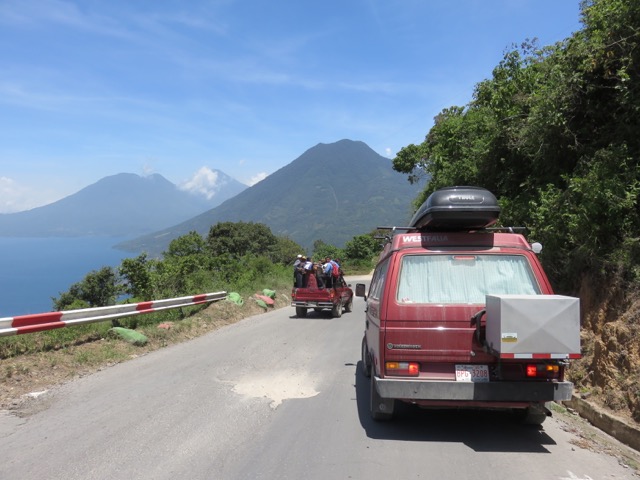
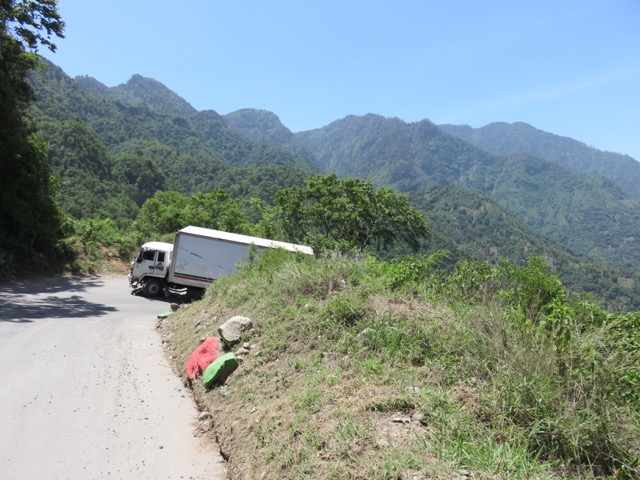
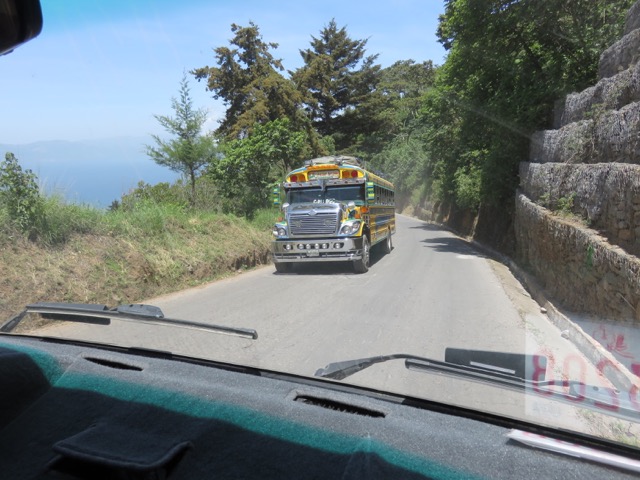
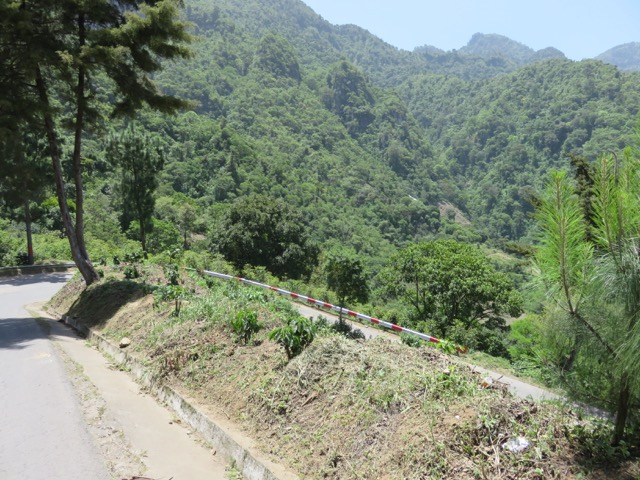
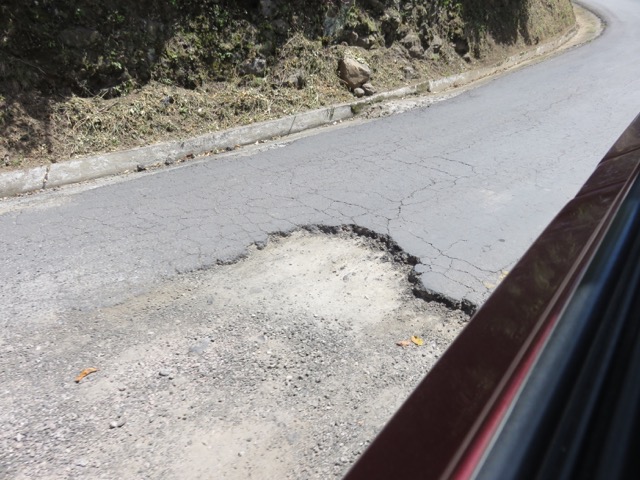
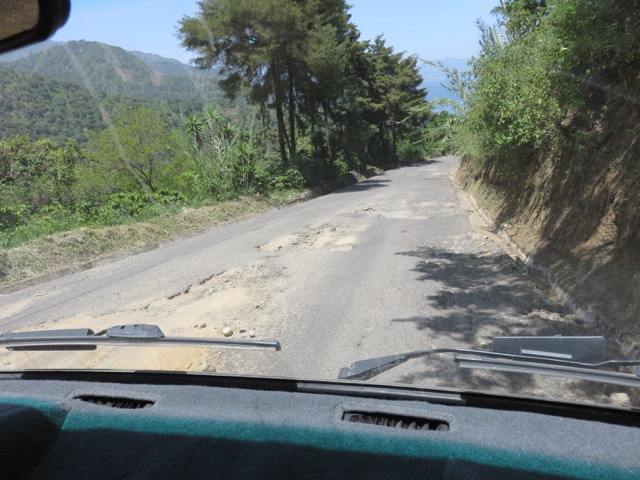
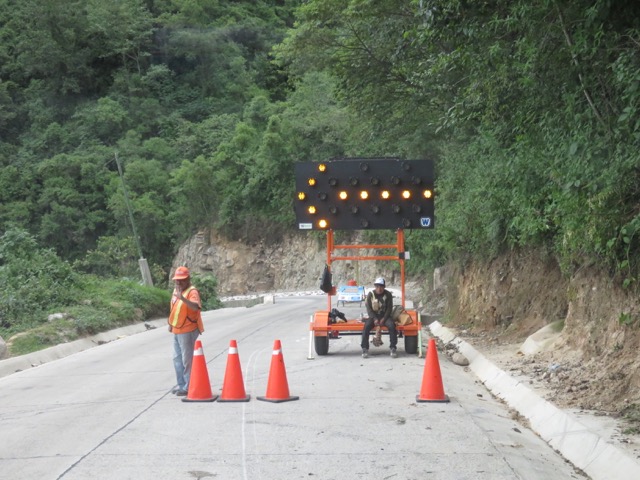
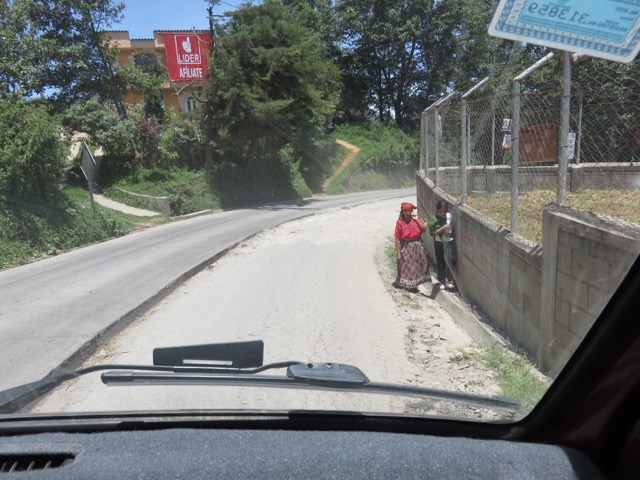

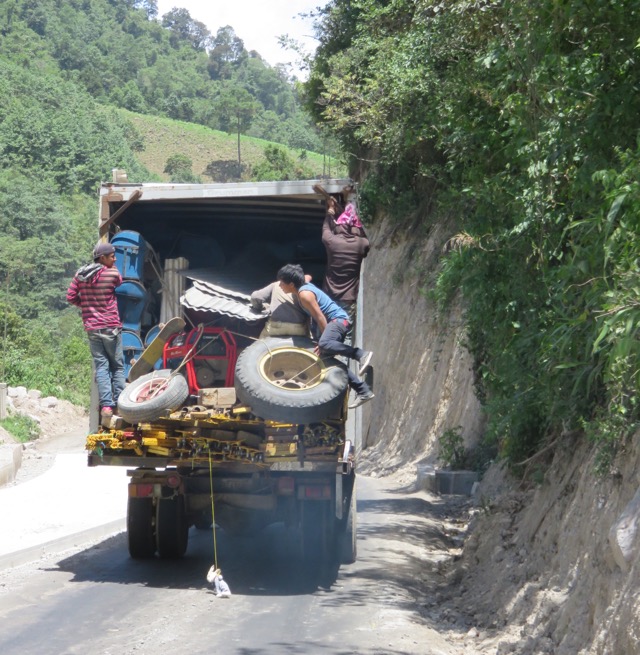
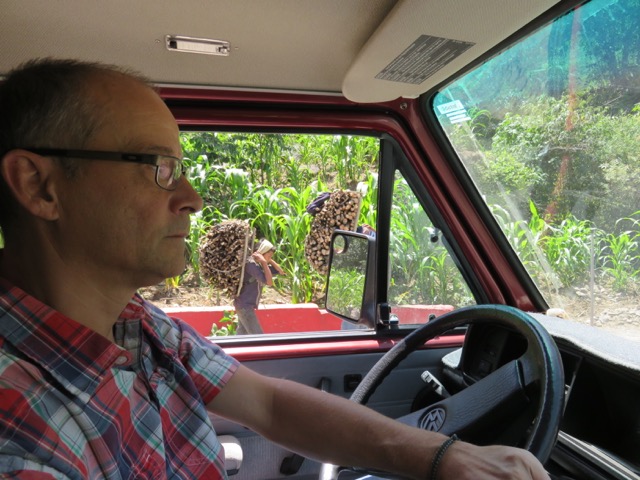
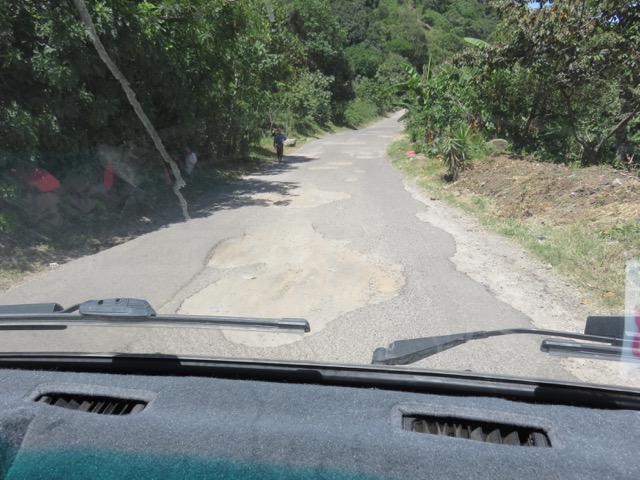
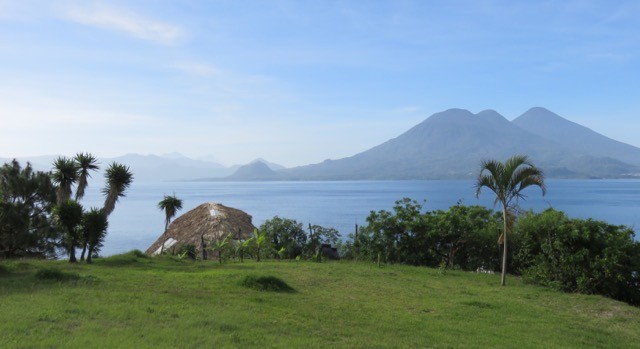
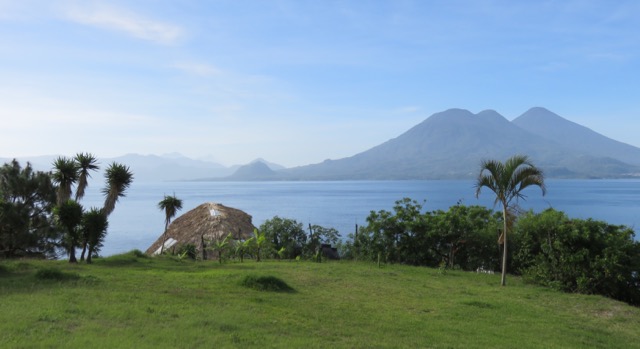
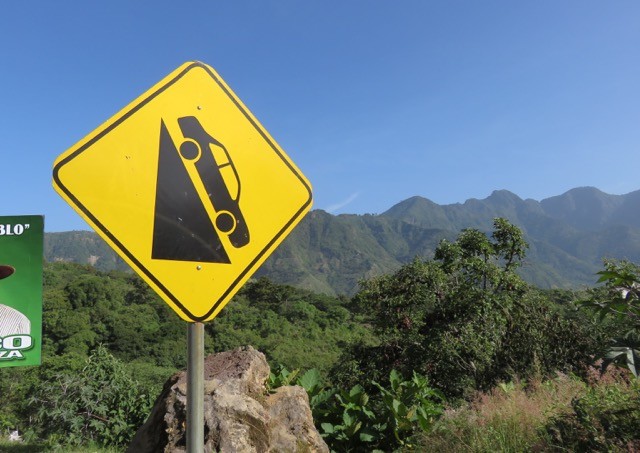


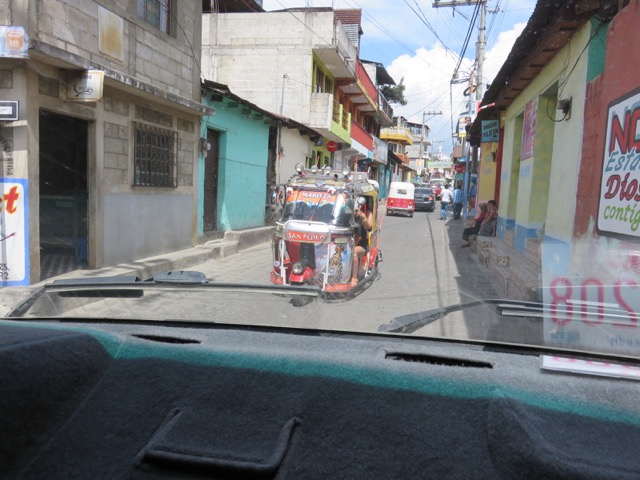
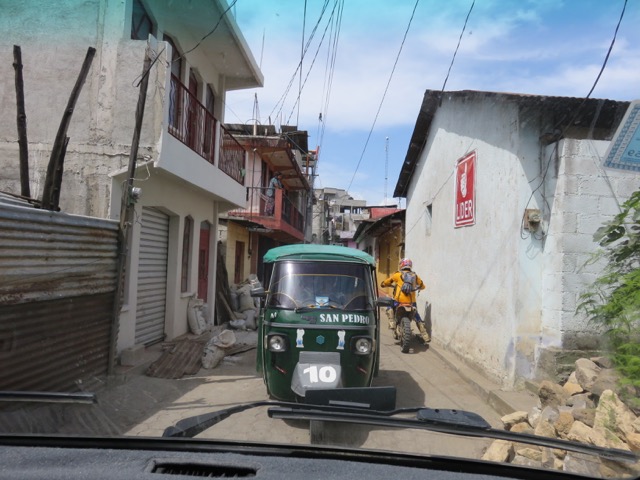
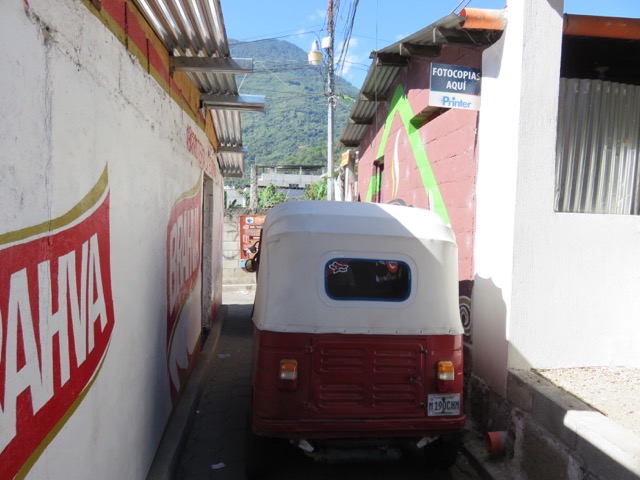
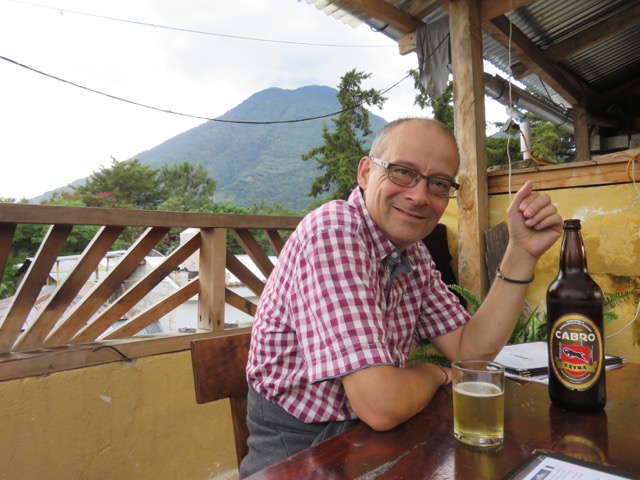
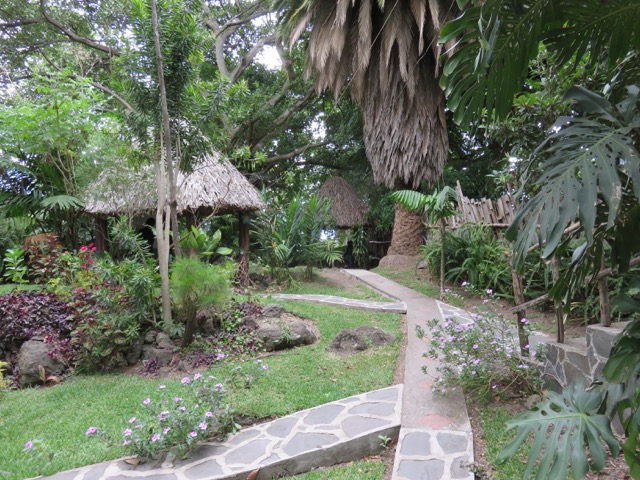

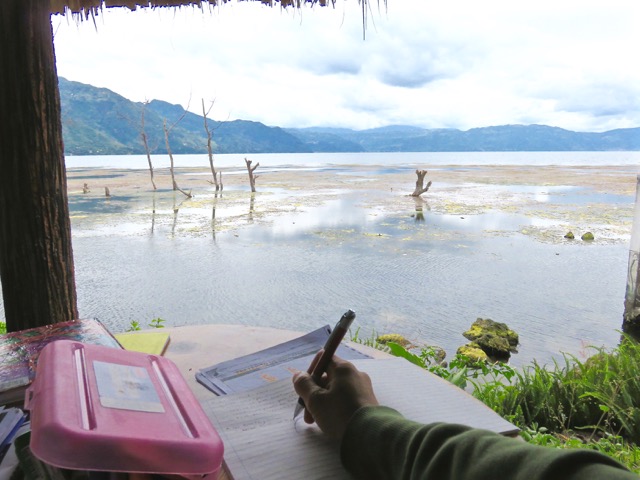
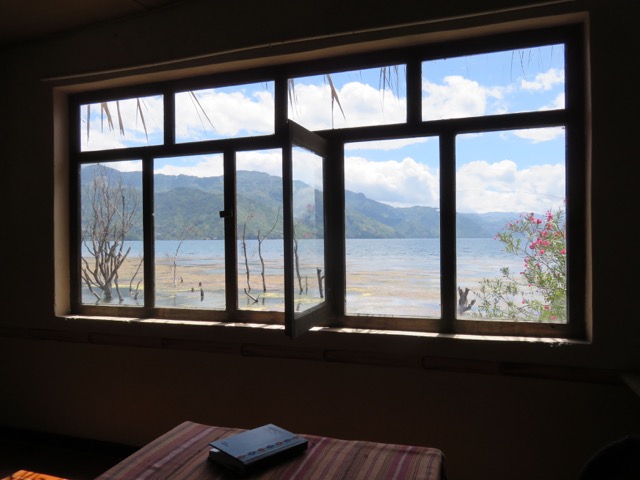
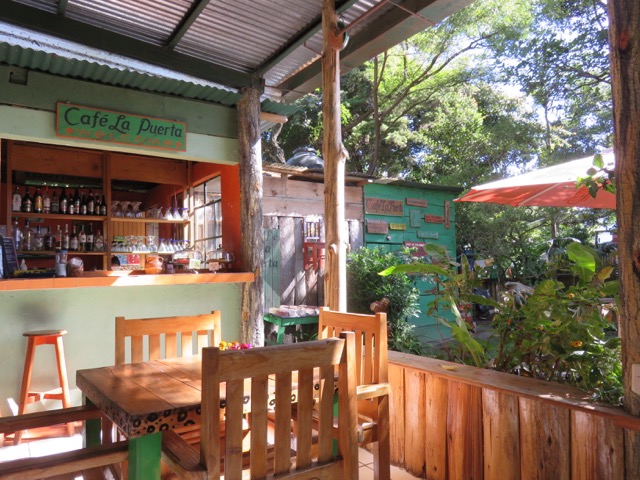



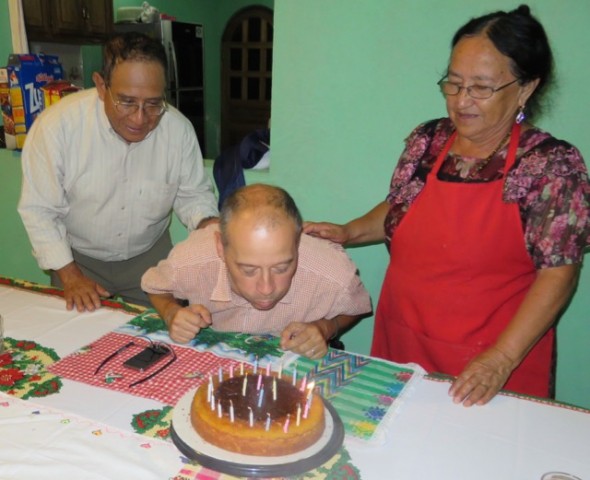

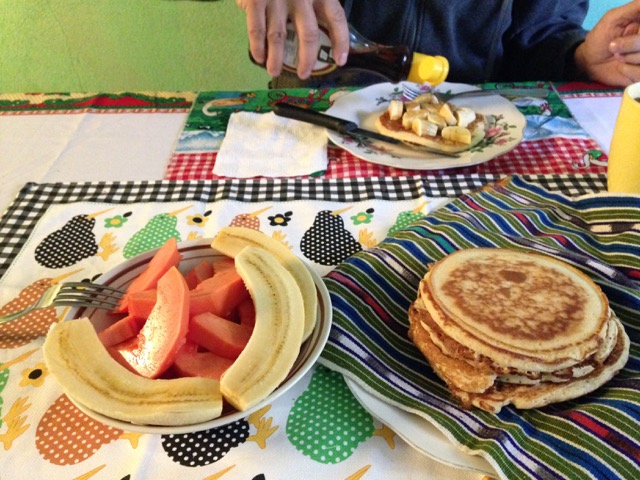
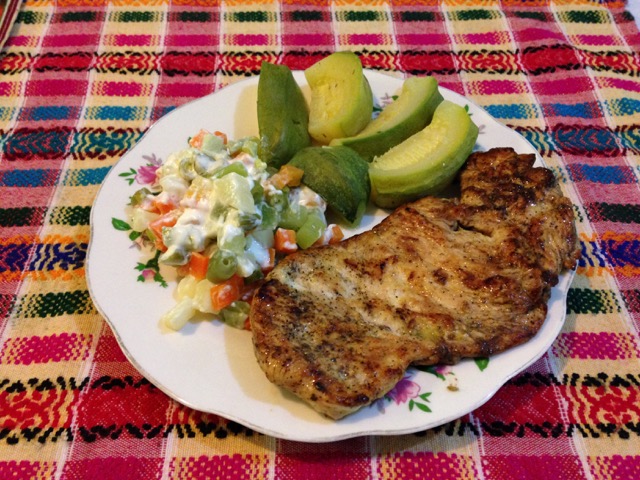

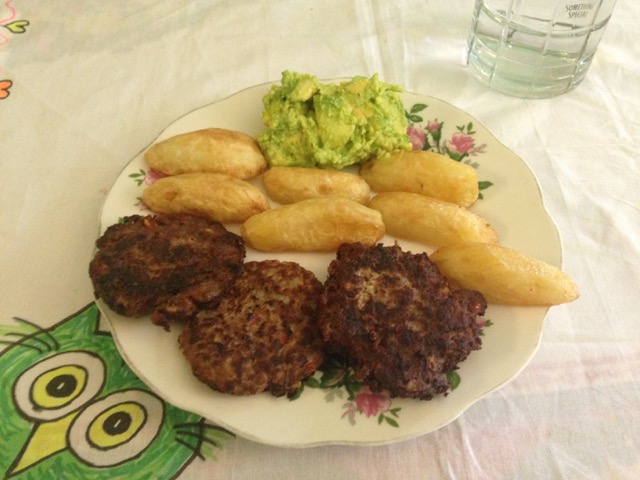

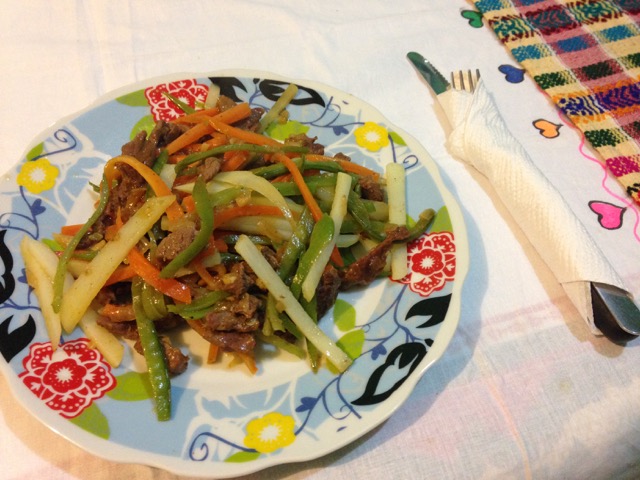
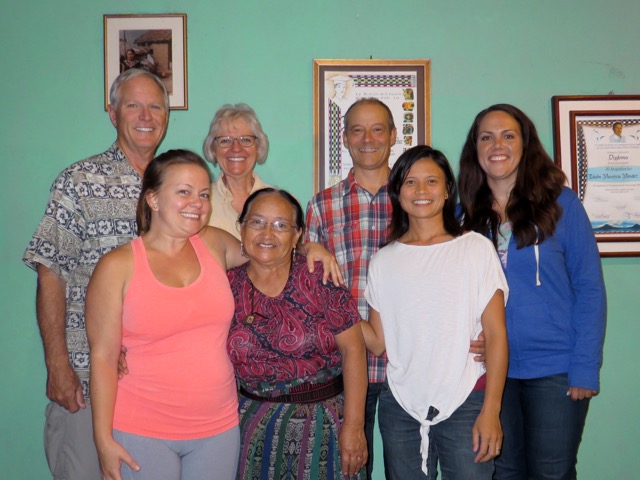
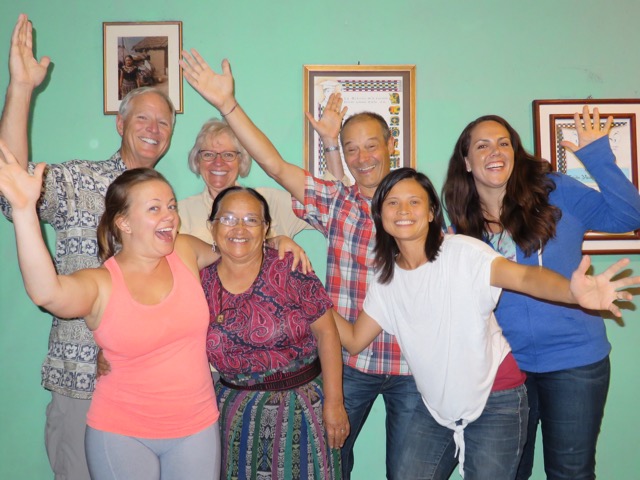
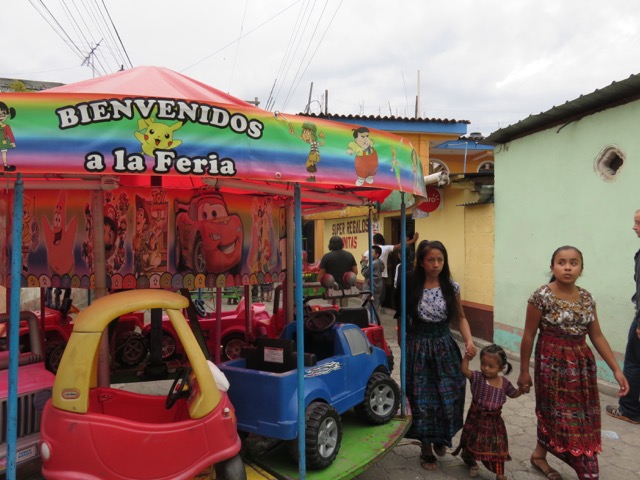

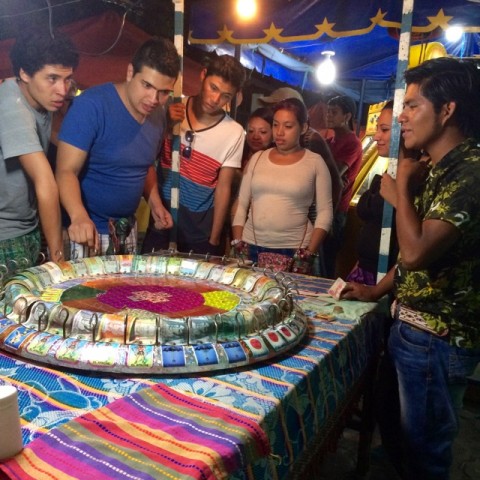
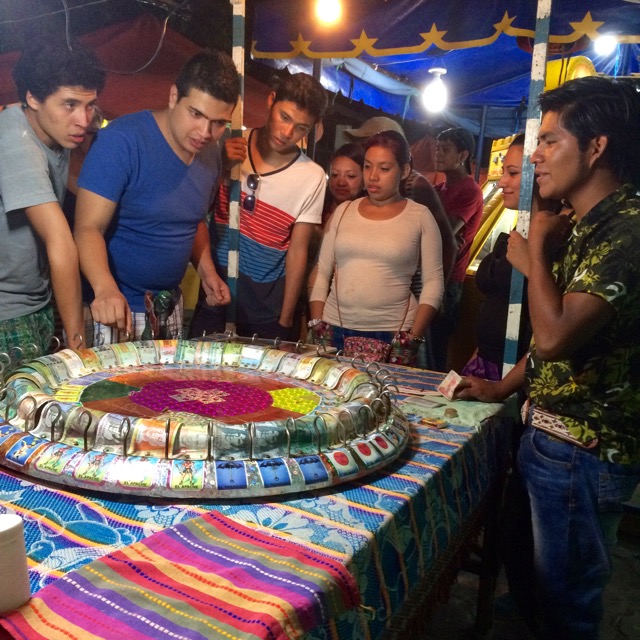
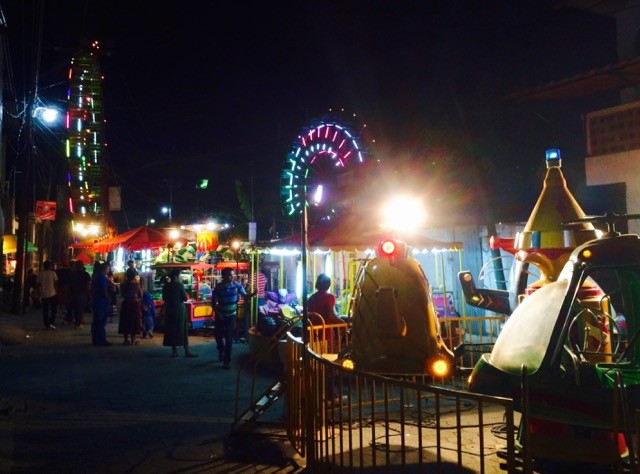
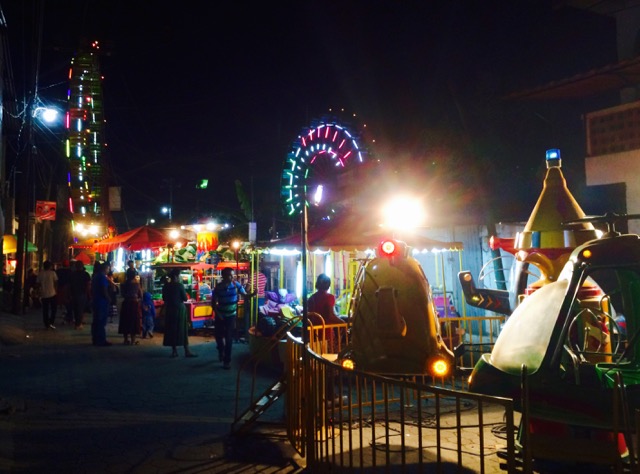
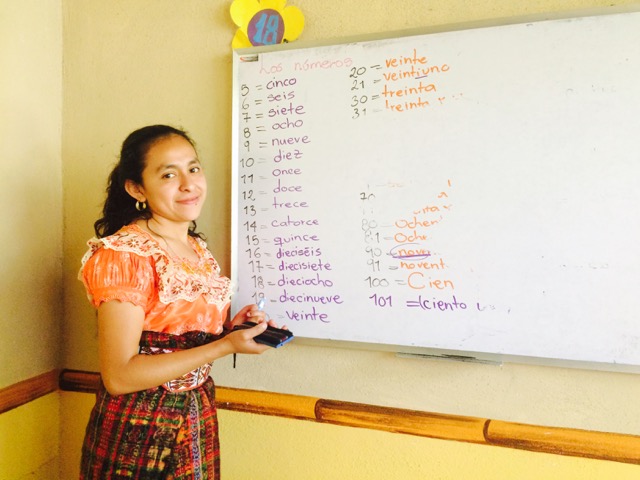
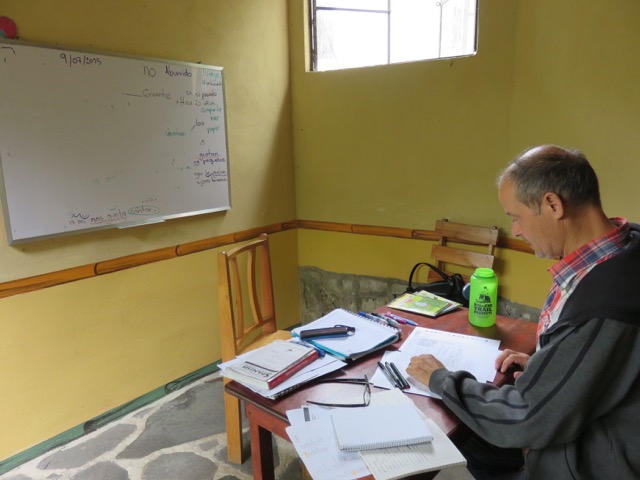
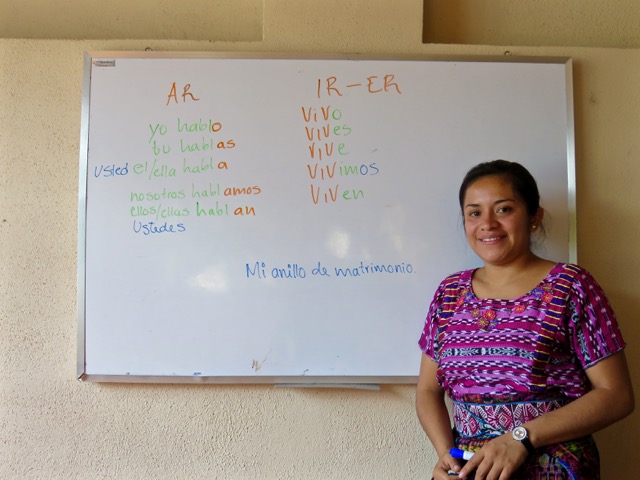
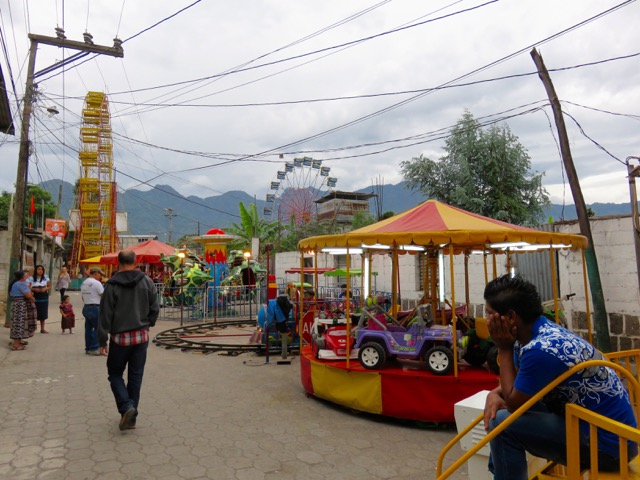
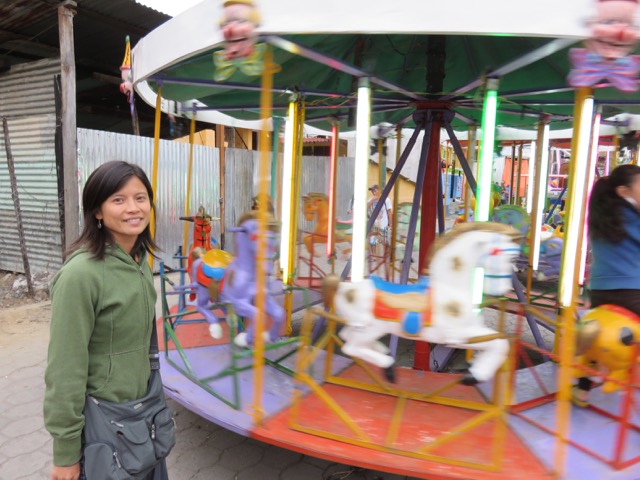

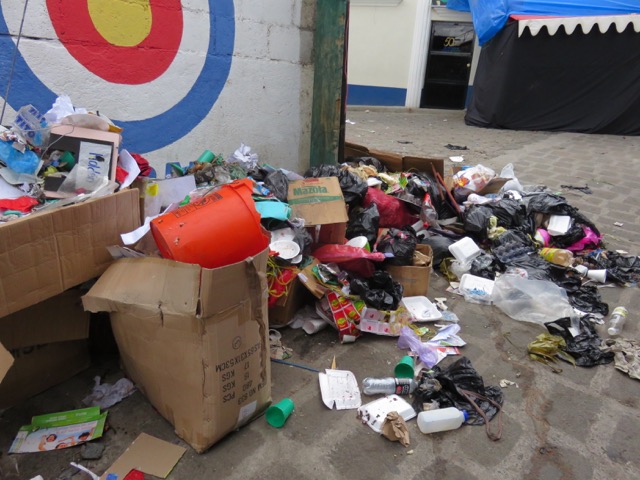
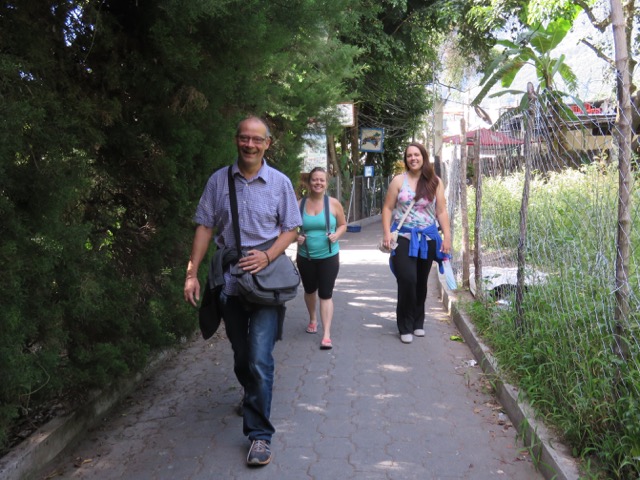
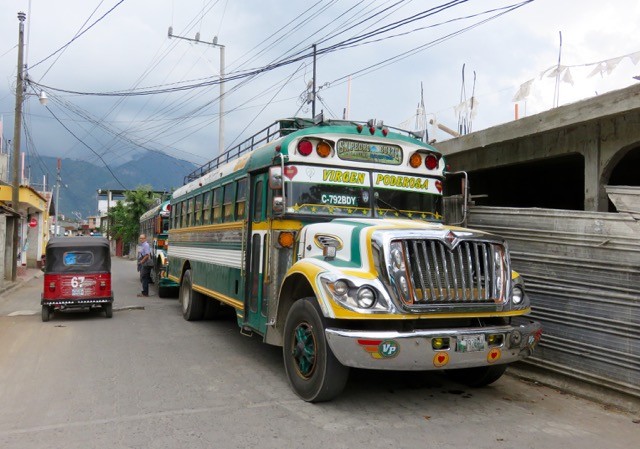
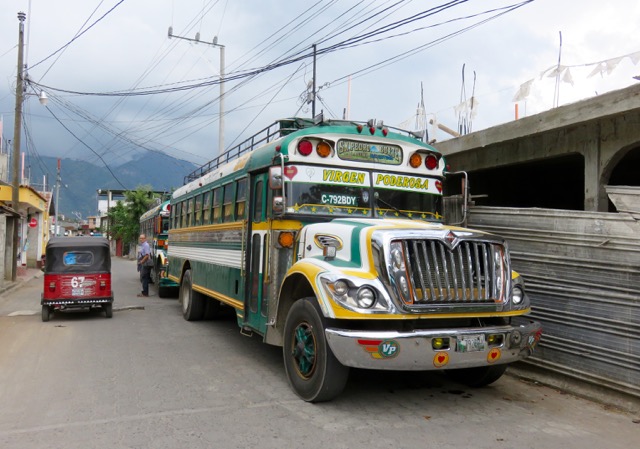
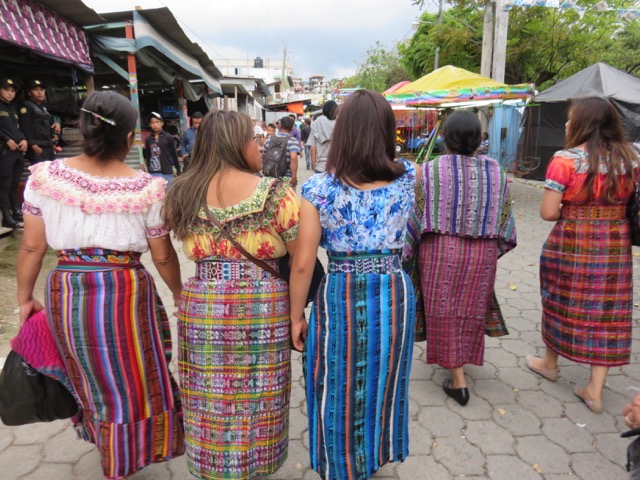
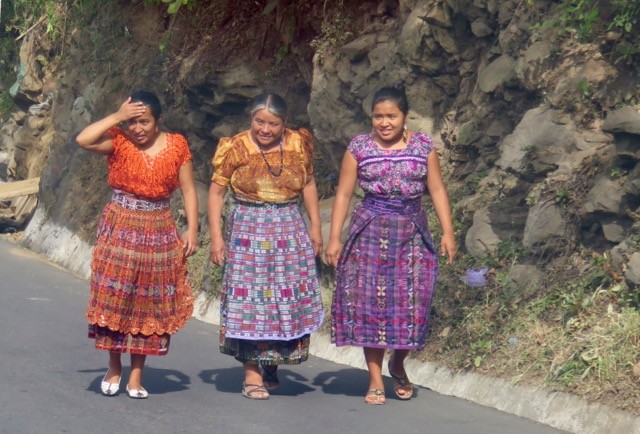

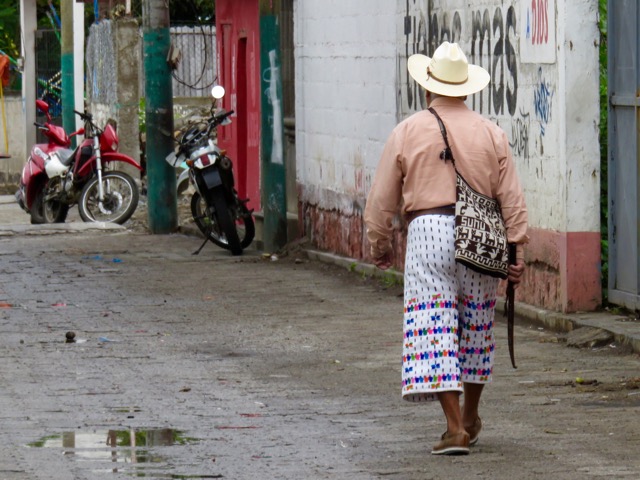
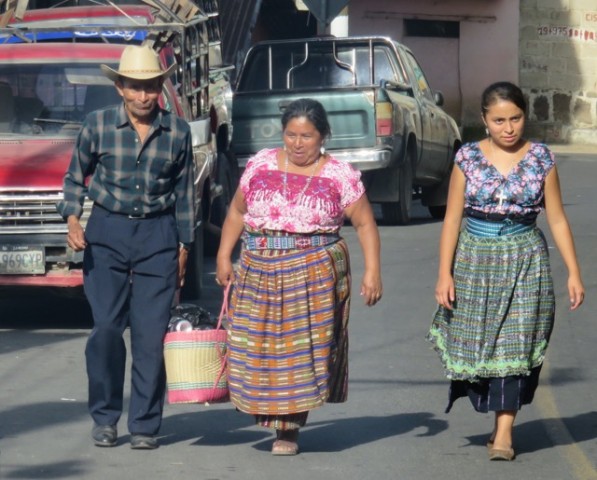

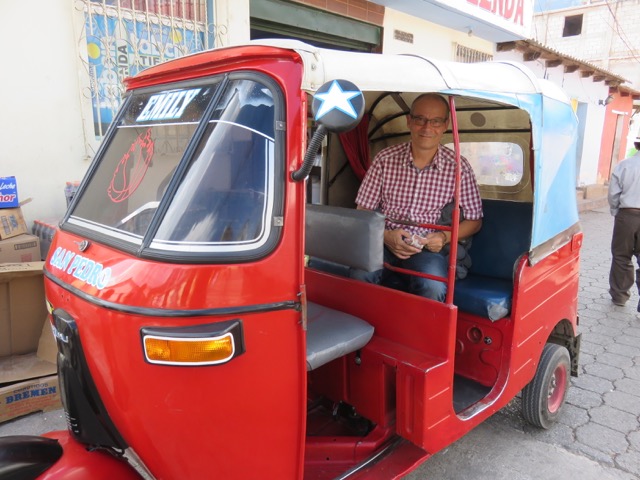
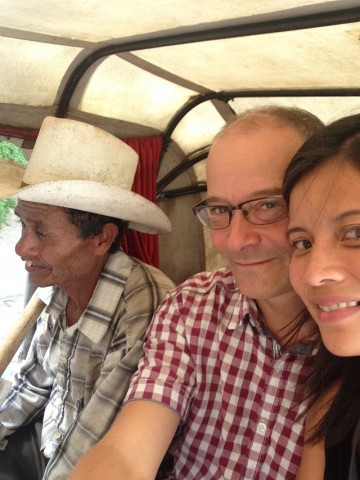
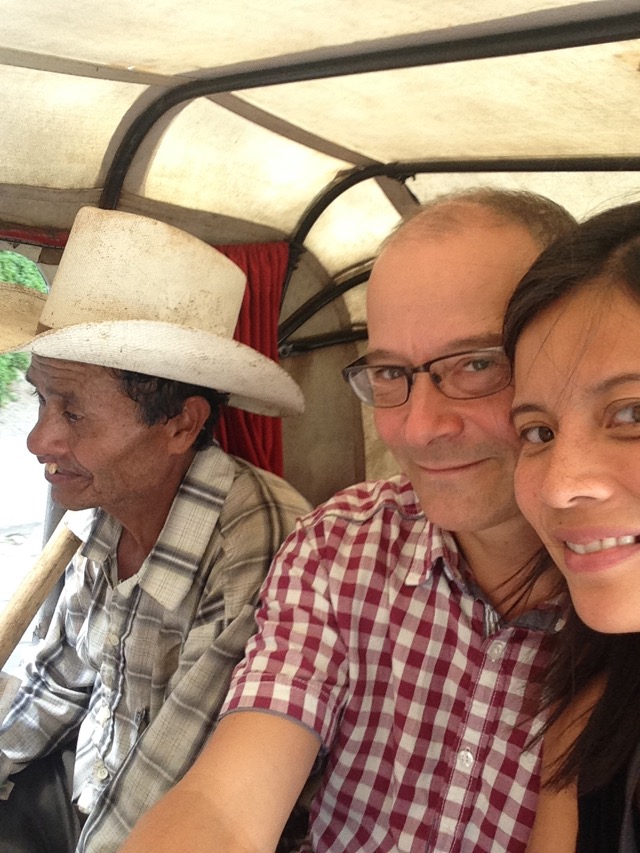

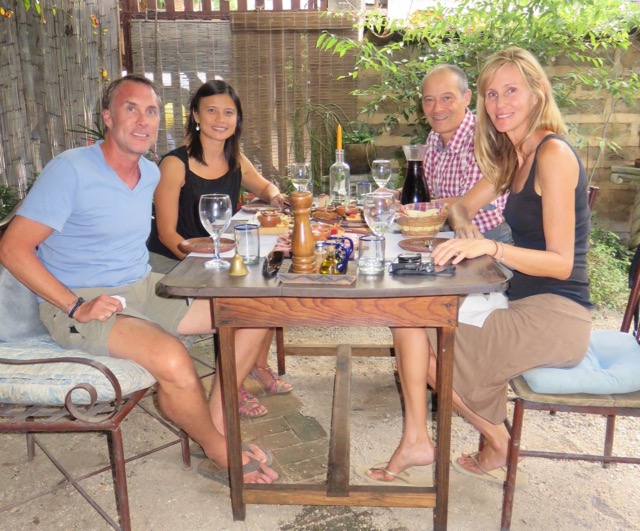
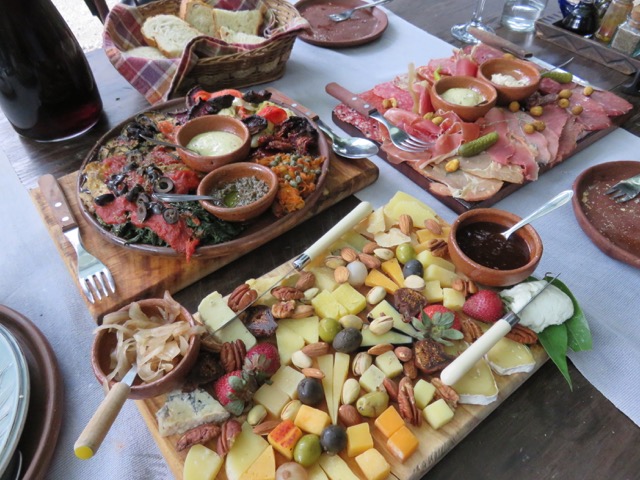
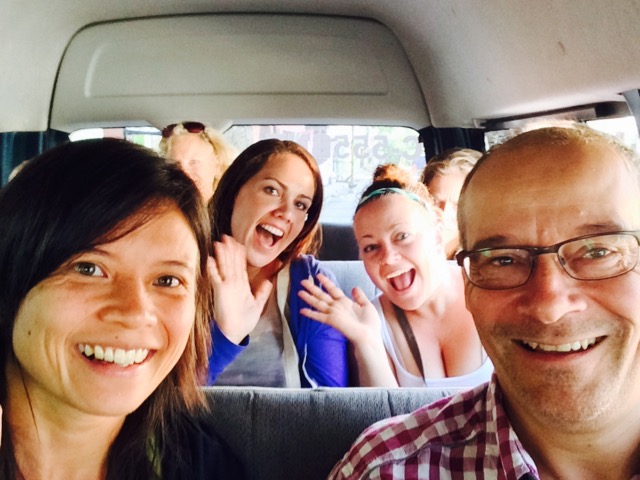
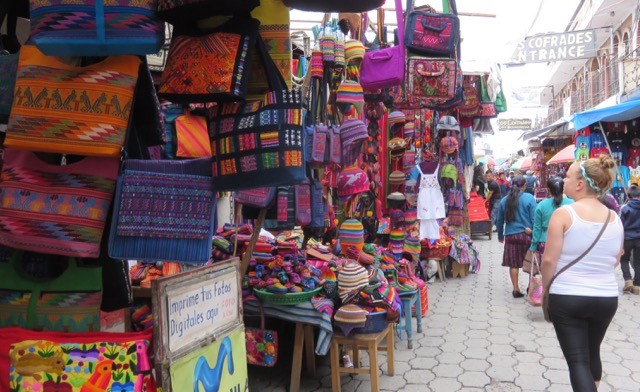



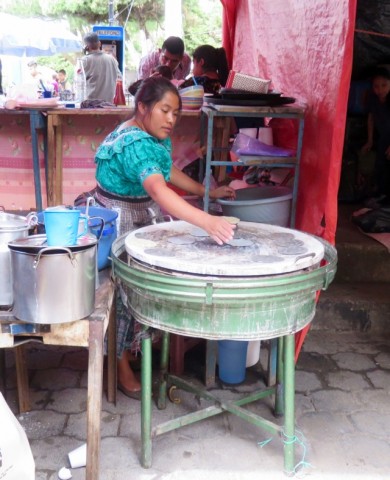
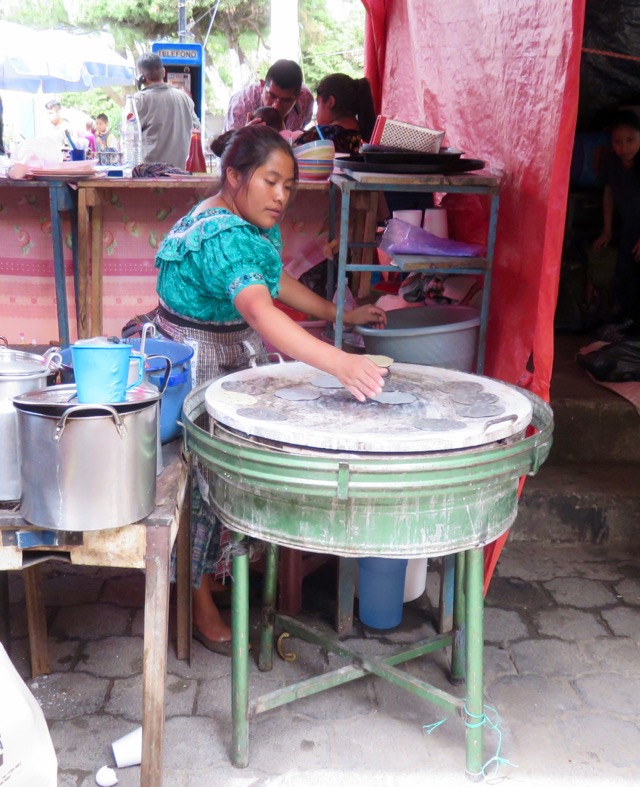
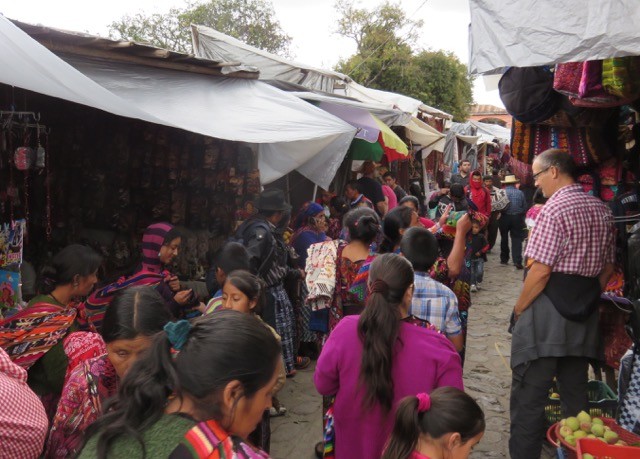
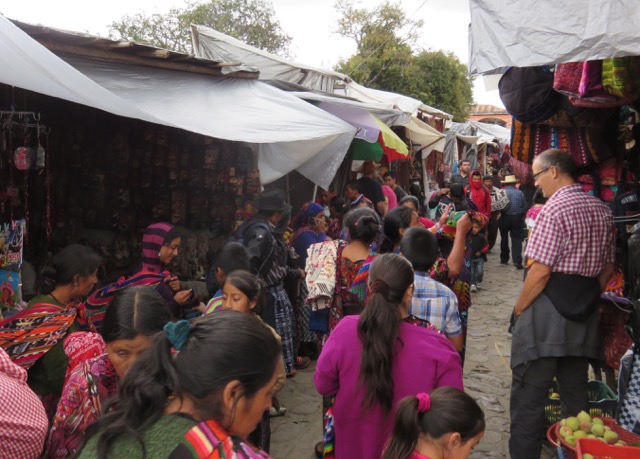
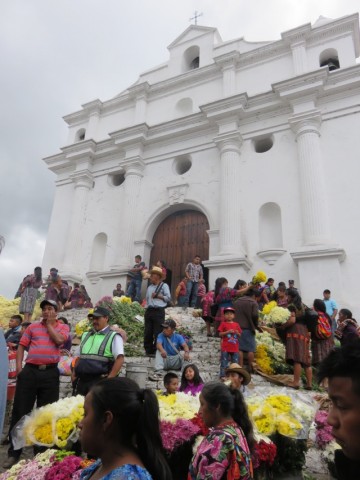
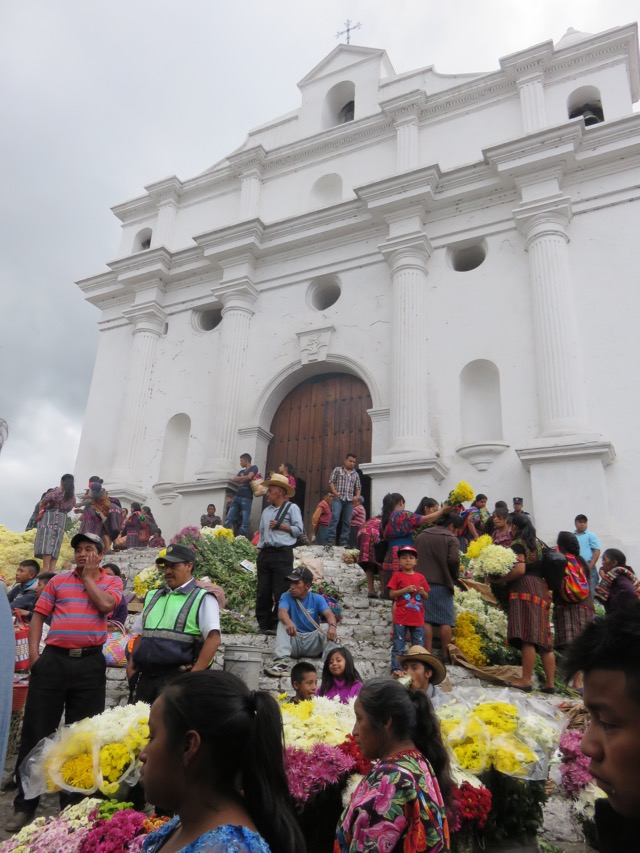

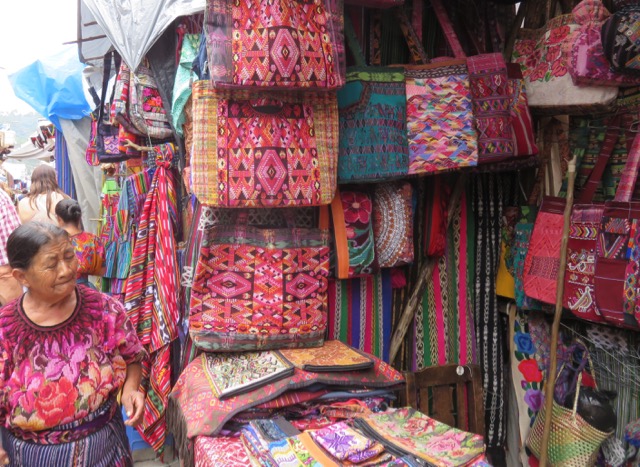
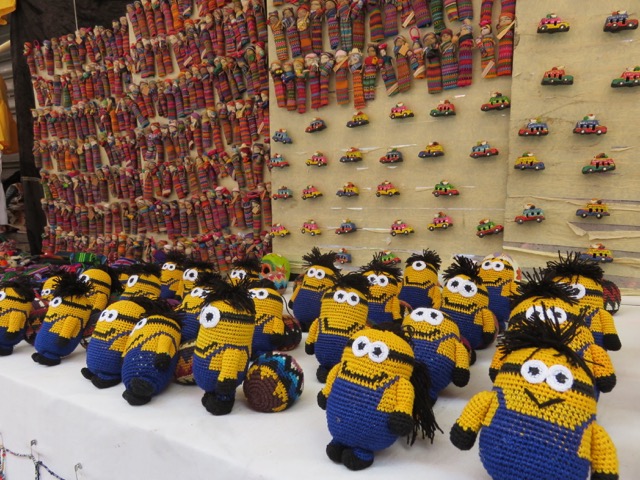
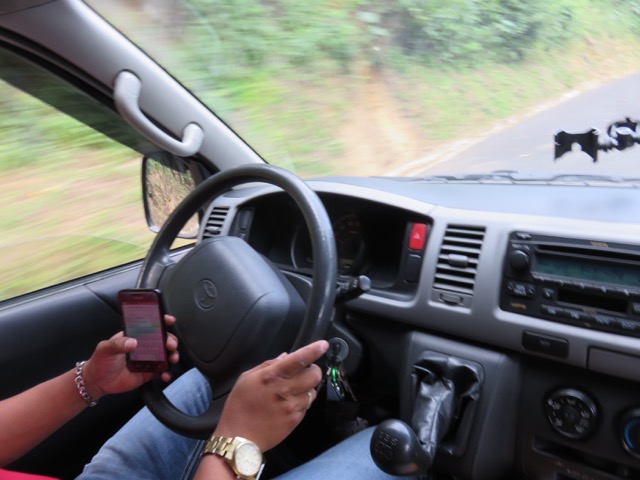
Just laughing out loud. Love this one!! Colin and I both want to take LOTS of Spanish classes before our next venture south. For some reason I could not remember how to say 50…and that was one of many of my language problems 🙂
Ha, ha, yeah we’re never too cool for school!
Great post guys! Man do I ever remember the stress of driving that road into San Pedro, except…you know, we got pulled in and out. 🙂
Sounds like you guys are having a blast!
We were thinking of you guys the whole time as we drove in and out of Lake Atitlan. Much respect for your decision to swap that engine! Lucky did just fine coming out of San Pedro, although her CVs occasionally made a knocking noise around tight corners. Gotta fix that eventually 🙂 Still having a blast!
That was a wonderful experience.